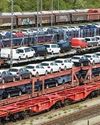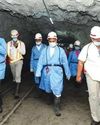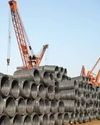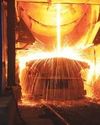
A total of 7 working manganese mines and 4 working chromite mines are going to shut operation in next few months. It is estimated to wipe out almost 16 percent manganese ore production and 50 percent chromite production from the domestic market, thus disrupting raw material supply for ferroalloys and steel industry and creating massive unemployment for a long period, Duggal said while speaking at Manganese / Chrome Ores and Ferro Alloys Summit organized by FIMI at Vishakhapatnam.
Such a demand-supply imbalance is bound to adversely affect all existing ore producers as well as ferro-alloy units. Existing supply chain and business linkages are bound to be disrupted, thus affecting competitiveness of the Indian mining as well as ferro-alloy industry, he said.
Industries woes
Ferro alloy industry in India is being squeezed by weak demand, high power costs, cut-throat competition in international market and stagnation in the steel demand and production in the country. Despite having a total production capacity of 5.15 mt per annum (mtpa) in the ferro-alloy industry, the industry has been battling a slowdown in the past 5 years (2013 - 18), with production of ferro-chrome stagnant at 1 mt (mt), ferromanganese at 0.52 mt and ferro-silicon at 0.09 mt.
To facilitate growth in the sector, the Government in its National Steel Policy 2017 has planned to support ferro-alloy plants by ensuring raw material linkages and stable supply of electricity.
There is also significant competition from the global market and the industry must utilize its full potential and rise to new levels of technological competitiveness and productivity. The domestic ferro-alloys industry needs to be promoted through a mix of progressive market development strategies and suitable fiscal measures to offset cheaper imports.
Need for value creation
This story is from the {{IssueName}} edition of {{MagazineName}}.
Start your 7-day Magzter GOLD free trial to access thousands of curated premium stories, and 9,000+ magazines and newspapers.
Already a subscriber ? Sign In
This story is from the {{IssueName}} edition of {{MagazineName}}.
Start your 7-day Magzter GOLD free trial to access thousands of curated premium stories, and 9,000+ magazines and newspapers.
Already a subscriber? Sign In

Steel's Net Zero mission
The country’s commitment to achieving Net Zero within a targeted timeframe will now propel its steel sector towards a sustainable future in line with global trends.

Fuel Price Hike, Supply Chain Disruption Hurt Festive Sales
Supply chain disruptions and fuel price hikes have hurt festive sales in a big way as most auto majors posted decline in sales in October.

Seaborne coking coal offers remain range-bound
Seaborne coking coal offers moved in a narrow range in October amid global supply tightness and healthy spot demand.

Global crude steel output down 8% in September
China manufactured 74 mt in September, fall of 21% y-o-y while India’s production went up by 7% to 10 mt.

MOIL embarks on expansion projects
“Even though our country is blessed with manganese ore reserves, we import 50% of the domestic requirement. We have to lower our import dependence and save precious foreign exchange.” Ram Chandra Prasad Singh, Steel Minister

Iron ore handled by major ports down 17% in H1
The 12 major Indian ports handled 27 mt of iron-ore during H1 of 2021, down by 17% from 33 mt recorded for the corresponding period of previous year.

Shrinking China output to boost India exports
“In the third quarter of 2021, the company actively responded to the pressure from external policies, such as production curtailment and dual control system on energy consumption and intensity, as well as coal resource shortage and surging prices.” Baoshan Iron and Steel Co Ltd

Indian Railways' iron-ore handling up 25% in H1
Indian Railways in April-September of 2021 (H1) transported 84 mt of iron ore, up by 25% over 67 mt during April-September 2020.

September crude steel production up 7.2% y-o-y
India’s crude steel production in September 2021 grew 7.2 percent to 9.547 million tons (mt) over September 2020 but was down by 3.2 percent from August 2021 output, provisional steel ministry data showed.

“Five enablers: way forward to sustainable cleaner steel”
Right and scalable technology, appropriate policy guidance by government, access to finance to fund transition, willingness of customers to pay for cleaner products and infrastructure for use of new technologies are the need of the hour for the sustainable and cleaner steel industry, according to Madhulika Sharma, Chief Corporate Sustainability, Tata Steel.